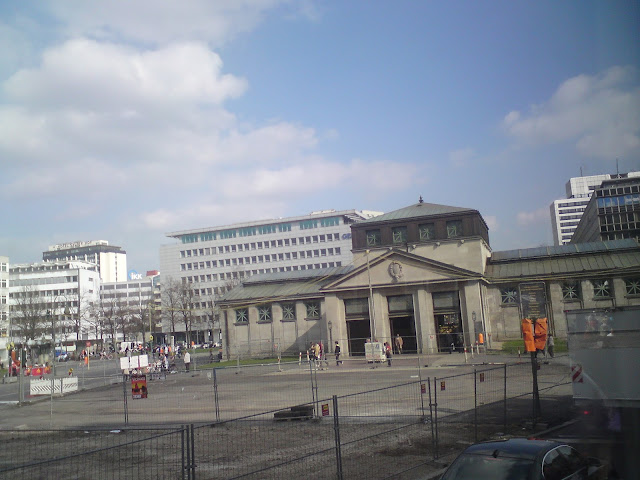Berlin's streets and squares - what is the meaning of their names?
Unter den Linden, Kurfürstendamm and Alexanderplatz; these streets and squares are well known even outside of Berlin. But after whom are the streets and squares named and what is their story?
Unter den Linden
This boulevard got its name from the lime trees that have been planted there. In 1647 the Great Elector planted on a former bridle path, which led from the castle to the Tiergarten, walnut and lime trees. The walnut trees died within a short time, but the lime trees still exist.
Friedrichstrasse
This popular street was named after Friedrich (English Frederick) King in Prussia (1657-1713). After the death of his father, the Great Elector, Frederick became in 1688 Elector of Brandenburg. In 1701 he crowned himself as Friedrich I. King in Prussia.
 |
| Friedrichstraße |
Alexanderplatz
The former cattle - and wool market got its name during a Berlin visit of the Russian Tsar Alexander I in 1805. Alexander I was a favorite of Queen Luise and an ally against Napoleon.
Potsdamer Platz
got its name from the Potsdamer Gate which once stood here. The Potsdamer Gate was one of Berlin's city gates in the Berlin Customs Wall (Akzisemauer), which also prevented the dissertation of soldiers. It originated in the 17th century and was gradually dismantled n the second half of the 19th century.
Kurfürstendamm, Tauentzienstraße and Wittenbergplatz
Berlins glorious boulevard got its name from its rulers, the margraves (Kurfürsten), who used the route, then a simple corduroy road
to ride to their hunting lodge ( Jagdschloss Grunewald).The present
Kurfürstendamm was laid out at the end of the 19th century.
Later the Kudamm, as the Kurfürstendamm is affectionately called by us
Berliners, becomes the Tauentzienstraße. Friedrich Emanuel Graf
Tauentzien (1760-1824) played an important role in the Wars of
Liberation (1813-1815).
In
1814 he successfully stormed Wittenberg and received the title of
"Wittenberg". The Wittenbergplatz commemorates this event. |
| Wittenbergplatz |
Straße des 17. Juni and Großer Stern
The
Straße des 17. Juni was named in memory of the uprising that took
place in the GDR on 17 June 1953. The Straße des 17. Juni leads to the
Siegessäule (Victory Column). The Victory Column at the Großer Stern is
seen from afar and attracts countless tourists. But why is it called Großer
Stern ? As you can see, several streets form a star. The square
was laid out by Elector Friedrich III. (1701 Frederick I King of
Prussia) around 1698, that guy we have met above. Once it was a resting
point for stage coaches. The large star and its surroundings were
redesigned in 1740 into a "representative space"
.
Gendarmenmarkt
The Gendarmenmarkt is one of the most beautiful squares in Europe. Here
was once the regiment of the King, the "Gens d'Armes" (french gunmen)
housed - hence its name.
In
GDR times, the Gendarmenmarkt was renamed Platz der Akademie. However,
after the reunification, it received its old name back.



